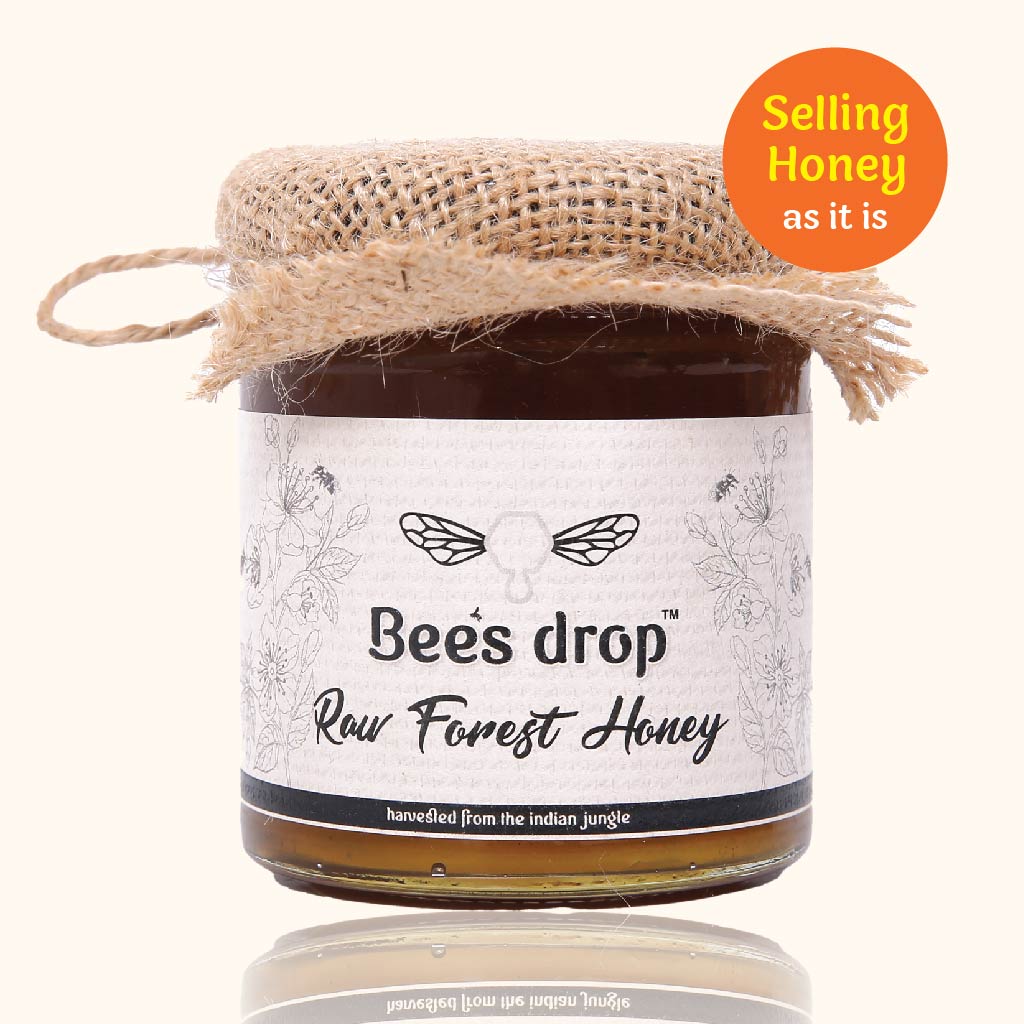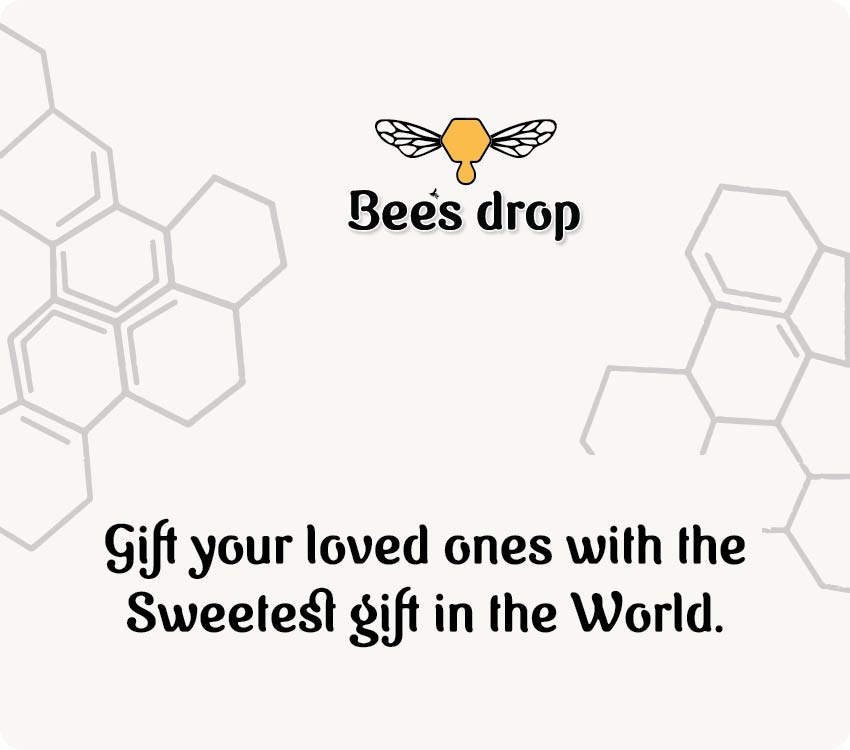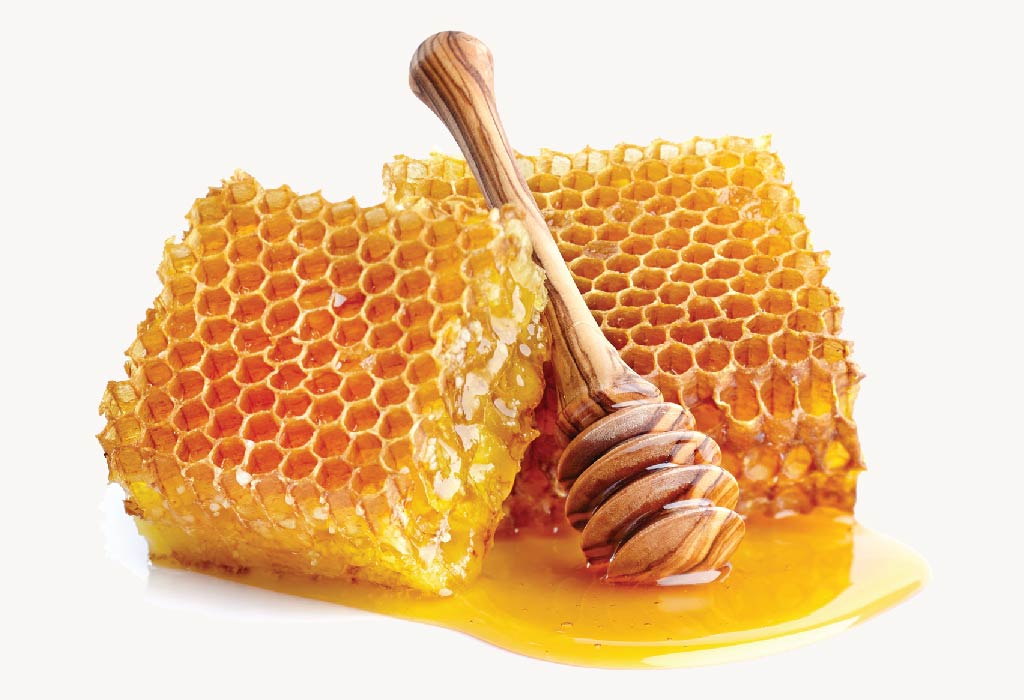
Bees does the manufacturing.
We does the trading
Honey, A Universal remedy and a miracle food, where God inspired it to produce nutrient properties whichever required for human health.

Honey is the only food made by an insect, and eaten by humans. It is the only known food which has all the ingredients needed to keep you alive. Potential Natural antioxidant.
Ocean of Nutrients in a drop
Do You Know?
100 gms of Honey most likely to contain Vitamins (Riboflavin, Niacin, Folate, C, B6, B9, Thiamin etc), Minerals (Calcium, Copper, Iron, Magnesium, Potassium, Zinc etc), Antioxidants (Polyphenols, Flavonoids, Catalase etc) and other nutrients comprising of 180+ nutrients.
About Beesdrop
Bees drop believes on small scale sourcing to avoid adulteration and thus paving the way to “sell honey as Honey” with Bee pollen, RAW, UNPASTEURIZED, UNADULTERATED. Different types of honey is being procured from various parts of India according to the richness of the particular region like Sidr honey from the deserts of Rajasthan, Acacia honey from Kashmir, forest honey from Himachal Pradesh, Punjab, Ooty Hills etc.
Honey a universal remedy
- Anti-Allergenic
- Anti-Bacterial
- Anti-Viral
- Anti-Fungal
- Anti-Cancer
- 27 Minerals
- 22 Amino Acids
- 5000 Live Enzymes
- Improve Digestion
- Boosts Immune System
- Reduces Risk of Illness and Disease
- Helps to Heal Cuts and Wounds
- Aids Weight Loss
- Promotes Healthy, Glowing Skin
- May Help Heal/Prevent Ulcers
- Raises Levels of Antioxidants in Blood
- Boosts Energy
- Supports Good Bacteria
- Antiaging
- Relieves Morning Sickness
- Soothes Sore Throat
Before consuming Honey, Just Imagine how its been made.

Stages of Honey Production
Foraging :
Searching for Nectar from Flowers
Honeybees goes foraging in search of flowers to extract nectar using their long, tube shaped tongue and store it in their honey stomach. ( Do you Know, Honeybees have two stomach. One for them, another for storing honey ). While the nectar is in the Honey stomach, it mixes with the enzymes that transform its chemical composition and PH, making it more suitable for long term storage.
Regurgitation :
Passing of Nectar from One Honey Bee to Another Honey Bee
When a Honeybee returns to the hive, it passes the stored transformed nectar to another bee by regurgitating the liquid into the other bee’s mouth. This regurgitation process is repeated until the partially digested nectar is finally deposited into a honeycomb.
Dehydrating :
Removing Surplus moisture content from Honey
To get all that extra water out of their honey, the bees work again, fanning the honey with their wings to speed up the evaporation process.
Storing :
Sealing the Honey with Wax
When most of the water has evaporated, the bees seals the honeycomb with a secretion of liquid from their abdomen that eventually hardens into beeswax. The beeswax protects the honey from air and water so that it stored safely.
Two easy ways to Authenticate the Genuineness of a honey :
- Every batch of Honey tends to vary in color, density, taste etc.
- It Should contain Bee Pollen, which resembles like dust, which means it should not be clear.

“It is a nourishment among nourishments, a cure among cures, a drink among drinks, a sweet among sweets, an ointment among ointments, and a delight among delights. Nothing of its kind that is better has been created for us, nor anything equal to it, nor anything close to it”
- Ibn Al Qayyim

